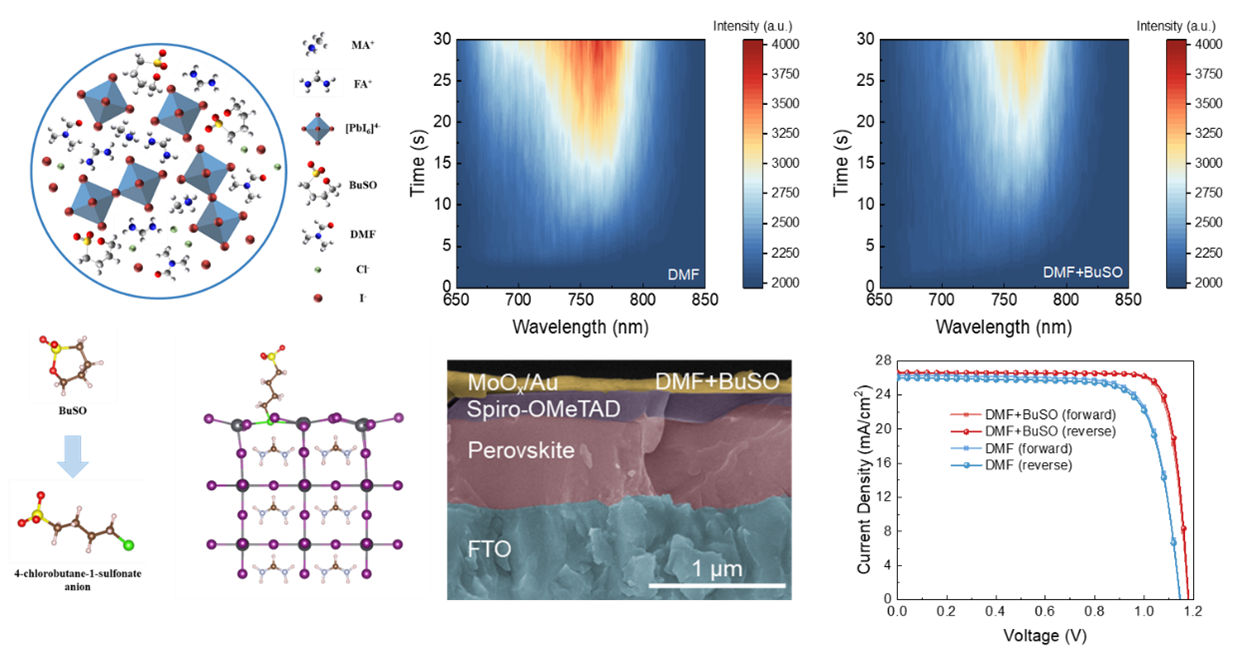Solvent Engineering for High-Efficiency Perovskite Solar Cells via Crystallization Control and Defect Passivation
Prof. MENG Lei’s group and Prof. LI Yongfang at the Institute of Chemistry, Chinese Academy of Sciences (ICCAS), utilized solvent engineering strategy by introducing a secondary solvent, 1,4-butane sultone (BuSO), to regulated the crystallization process of perovskite films.
Organic-inorganic hybrid perovskites have attracted attention in the field of photovoltaics. With a rapidly improved efficiency, perovskite solar cells (pero-SCs) have become a strong competitor to monocrystalline silicon solar cells. However, due to the ionic nature, the perovskite films prepared by solution methods often have many defects, which affect the efficiency and long-term stability of the devices.
Therefore, to fabricate high-efficiency pero-SCs, it is important to balance the nucleation and crystal growth rates during the film formation process by precise crystallization control. Besides, introducing passivators to achieve efficient passivation of surface and grain boundary defects of perovskite, could significantly reduce the defect density and improve stability.
By introducing BuSO into perovskite precursor, the nucleation rate was decreased due to the formation of Lewis-acid-base complex between BuSO, PbI2 and formamidinium iodide (FAI).
Moreover, the in-situ photoluminescence measurement demonstrated that the secondary crystallization process was suppressed.
Thus, a pin-hole free perovskite film with large grain size was obtained. Additionally, further investigation revealed that BuSO underwent ring-opening reaction during the subsequent annealing process, and the products acted as passivators for the bulk and surface defects.
Therefore, with the fine management of crystallization kinetics and efficient passivation of defectssynergistically, the champion pero-SC device optimized by solvent engineering strategy achieved a power conversion efficiency of 26.5% with enhanced stability.
“Solvent engineering by the addition of BuSO in the perovskite precursor solution enhances the crystallization of the perovskite and the product of the simultaneous ring-opening reaction passivates defects. This work provides more options for the solvent for perovskite precursor.” said WANG.
“Our study highlights the critical role of the solvent in fabrication of perovskite films, and provides a new pathway for the developing high-performance pero-SCs devices." said Prof. MENG.
This study was published in Nature Photonics.

Precise Control of Crystallization Process for Perovskite Films via Solvent Engineering





